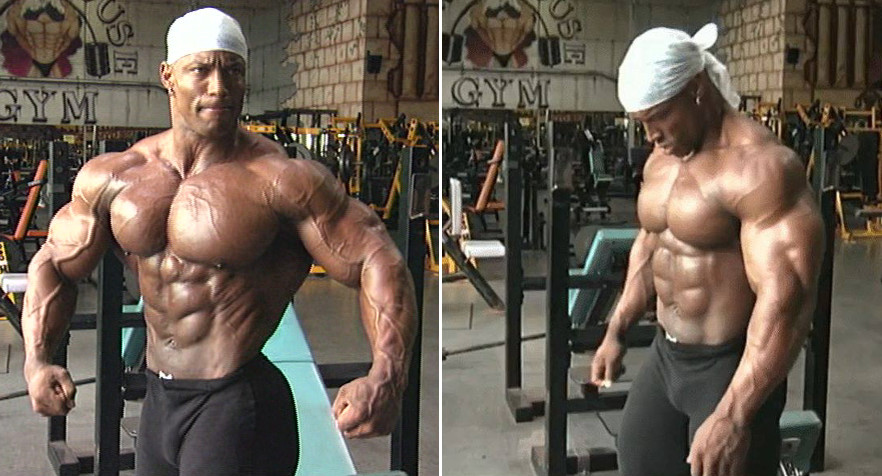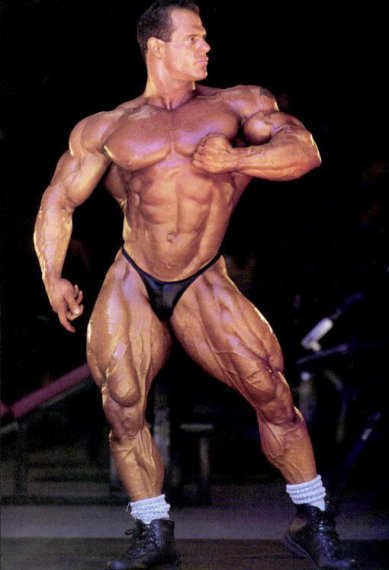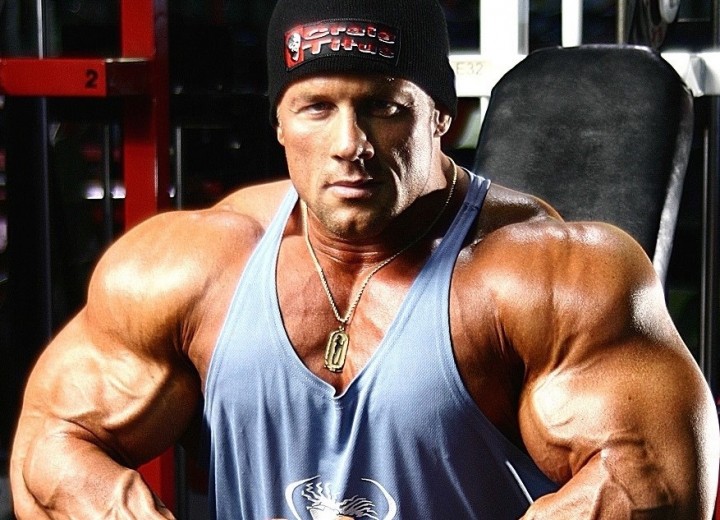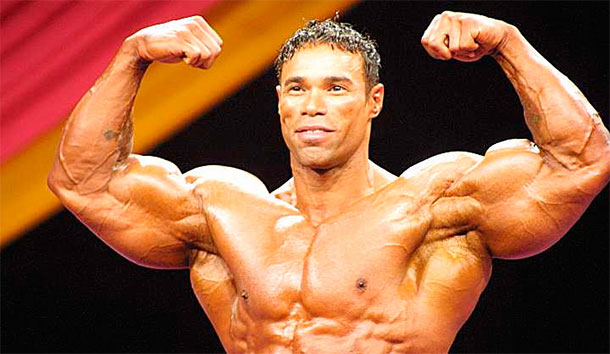6 secrets from professional bodybuilders
Show skeptic professional bodybuilding, and he will believe in the existence of aliens. Indeed, according to the laws of human genetics, such people simply cannot exist. But, as they say, the rules are there to violate them. And when people like you achieve outstanding success, self-confidence and self-confidence grows stronger.
Do not listen to those who pro sports success writes off the popular excuse: “They were lucky with genetics!” Of course, if from birth it is not destined to be two meters tall and weigh 150 kg, then the situation will not change even the most rested “rolling”.
BUT: to look slim, fit, attract the views of the opposite sex – it is within the power of ANYONE! And here the excuses of sloths do not cause anything but regret. The principal difference between pros and amateurs is that for the first, bodybuilding is a profession, and the latter simply doesn’t have to waste time on trifles and borrow their branded training “tricks” from more experienced colleagues.
So what is the secret of professional bodybuilders?
Perhaps in the hard principle of limiting loads or the principle of psychological attitude, such as mental and muscular concentration of prolonged contractions? Or maybe the secret is stored in supersets, the use of a “pyramid” or giant series? We can not exclude the main paradox of bodybuilding – instinctive training, breaking all the canons of athleticism 70s.
Perhaps the answer is not even in this, but in the theory of peak concentration, which elite bodybuilders so diligently practice? Or in forced repetitions – the favorite admission of guys with obvious signs of masochism? Other technical categories from the Weider brothers are also relevant. The eldest, Joe, dubbed bodybuilding’s own basics “training principles.” Champions prefer to call her commandments.
SHAWN RAY: step Sets

More than thirteen years I am in the top five bodybuilders of the planet. Therefore, I can state with confidence that my success in sports is directly related to the active use of stepped sets, or, as they are also called, the dropping principle. This technique stimulates the entire body: muscles, nervous system, and most importantly – the brain. Therefore, I get a lot of motivation to grow and further loads. Using stepped sets, I kind of drop the pain threshold far beyond the limits of consciousness and “pump” the muscles to crackle.
Suppose I work on leg extensions: in the last set I perform 10 repetitions with a weight of 120 kg, then I quickly lose weight to 90 kg and try to overcome 10 more repetitions. Again, I reduce weight – this time to 70 kg and immediately squeeze out the last 10 painful movements. Thus, a single set goes under 30 repetitions!
The main advantage of the technique is that it can be used for any muscle group and in any exercise you want. Personally, I like to use this principle in the bench press, biceps lifts and, of course, squats. It is in these three exercises that you most clearly feel the cherished burning of the muscle fibers swelling right before your eyes.
In the work with the bar I usually insure on both sides. If necessary, I give a sign to the comrades, and they remove a couple of pancakes; so i do another 10 reps. In other words, keeping the technique, I do not give myself a chance to “cheat”. Exercises with dumbbells are also an ideal training ground for dropping. In fact, during one exercise, I walk along the entire rack of free weights, achieving a deadly “pumping” of muscles.
Regardless of the motility of a training device, the rule is always at the forefront: “Squeeze the maximum repetitions in a minimum of time.” That’s why, on the eve of “Olympia”, I say to myself: “It’s time to play with the scales, baby!”
Tom Prince: forced Repetitions

Muscles will not grow until you teach them how to grow out of the “pants” that mother nature has cut. It’s easy to do: for example, I’m going to do the last set of each exercise, as they say, “to failure” for five, six or seven repetitions, then with the help of a partner I’ll continue a couple more. Applying these “feints”, I immerse myself in another dimension of superloading, which is not accessible to ordinary mortals.
It is extremely important to learn to move into this dimension, because as soon as there is an adrenaline rush. It is easier to explain: there is no difference between the science of growing muscles and cycling. Remember how the father helped you to make the first meters on your beloved “Friend.”
He backed you up by artificially stabilizing your body until you developed coordination. In bodybuilding, muscles also need to be “acquainted” with overloads and their corresponding balance, which were hitherto perceived inadequately. Forced repetition is a tool that clearly demonstrates that the talents hidden in you are almost limitless.
“Fast and Furious” is acceptable everywhere, except, perhaps, the press and trapeze. It is especially effective in working with a barbell. Multi-joint training techniques using free weights, such as bench presses and squats, require the greatest stabilization of the body. If, at the beginning, attempts not to “cheat” with forced repetitions look clumsy, then they will subsequently give an increased efficiency when recruiting “masses”.
Sometimes you have to “sin” by forcing in simulators. In such cases, limited by the numerous levers of motor movement, it attacks only a specific muscle area. I do not claim that “pumping” by means of “afterburner” is ineffective in cars, just focusing on the fact that it is more reasonable to use it for “pinpoint” strikes.
CRAIG TITUS: filling Principle

For a long time I trained according to a primitive philosophy – weight for weight. But visible changes in my physiology began to occur only when I switched to the Waider principle of filling. Do not think for bluster, it was a great turning point in my philosophy. I learned the secret of how to “beat” a muscle so much so that it could not make a single lift to the final of the set.
Blood is the food of the muscles, therefore, once again I repeat a seditious thought: filling the muscle with blood is the first indicator of the quality of the workout. The stronger the muscles swell, the tighter they become, the greater the blood flow. It is important to understand that the fatigue accompanying the process is not determined by the “dying” of the muscle, but by its “pampering” to the extent after which the pain becomes intolerable.
Technique is just as important. The maximum level of blood saturation is achieved only when working with an increased number of repetitions, and lighter weights than usual. But this does not mean that heavy approaches should be avoided. Power sets superbly strengthen the tendons and generate the power we need daily. True, for our principle, the synonyms of “heavy” are forbidden at the root! The number of repetitions in the approach will increase to nine. Moreover, such a “pamping” requires at least four ruthless approaches.
The principle of filling can be tailored to any exercise, but I found that it gives the greatest effect in simulators. The artificially created equilibrium releases additional blood flow that goes straight into the work area.
My advice: experimenting with the goal of finding out which exercises you have achieved the maximum result. Personally, every time I change my mind, bringing new and new exercises to the plan, and while it works!
Jean Pierre Fux: instinctive Training

Looking at me, you might think that my size is the result of countless extremely heavy sets. Although I am considered one of the strongest bodybuilders, size and strength came to me not because of this, but due to mastering the principle of instinctive training. Mentally analyzing the effects of tested training and dieting strategies, I found my “middle ground” by trial and error.
Instinctive training in my concept is a function of thought. I ponder the “weights necessary for the bone-crushing pressure of a muscle area, down to the number of repetitions and sets. Intuition serves as an invisible link between the head and muscles. But you should not go to extremes: to invent fatigue after a good training is not the same what to visit the gym in reality. Your muscles and brain should play in the same team.
My personal intuitive training begins with the rising of the sun. For example, today I devote to “pumping” hands; getting out of bed, the first thought – about the upcoming training. On the way to the gym, I step by step pondering each exercise in my hands, reproaching myself beforehand for what I can do in the last approaches. By the time training begins, the blood, the word trained, fills exactly those parts of the body that are being worked on.
But the benefits of instinctive training do not end there. Thanks to mental planning, “pumping” allows you to focus exclusively on muscle contraction, rather than thinking about the technical side. I also do not have to pay attention to sliding my elbows back and forth during warm-up approaches. Think about whether to spend money on widely advertised “magic pills”, if you can just help!
CRIS KORME: priority principle

I fully share the opinion of Fux, instinctive training is something! But a natural question arises: what should be focused on in order to get more effect? And here comes the new basic principle – the principle of priority.
My legs are perfect. There was a time when the bottom of my body was far behind the top. I started to kill the lagging area at breakneck speed: I changed the training schedule, started working on my legs in prime time – at the end of a four-day split, from the very morning after a daily rest. I was merciless.
After the “warm-up lap” in the form of extensions, he made a “pyramid” of squats in five sets: 15 repetitions in the first and 10 in the last; strictly followed the motor skills of movements and, at times, even meditated, like a schoolboy before responsible starts. It happened that I could not stop and conducted the following complex equally intensely: four ten-set presses with legs, four sets of hack-squats, three approaches of attacks, and as many extensions.
To tell the truth, the priority principle worked too well: the growth of the legs was so fast that I began to be afraid, no matter how hypertrophy would change direction. We had to urgently revise priorities, and the principle again proved to be remarkable. Believe me, now for me there is no problem, how to maintain a physical balance is only a matter of priority. However, it is worth making the slightest mistake and wait for the “fallout” from the exterior of a separate muscle group, although … someone even likes it.
KEVIN LEVRON: the principle of progressive overload

I have always loved extreme hard training. Believe me, if any of my rivals ventured to repeat something like that, then they would give him chicken broth for the rest of his life. You have to be crazy to be “killed” like this seven days a week, but if you don’t like it, then I advise you to change the gym and the Club of Four Horses.
The overload principle lives beyond the limits of the usual overcoming of scales. I mean 4-6 deadly repetitions in each exercise. In doing so, you probably would not want to tear a muscle or pull a tendon. Therefore, in order to avoid tragedy, I advise you to apply the principle of “pyramid” as a preventive measure.
So, I do a warm-up approach in 30 repetitions, the first working set is already at 15, but when I get to the last – the fourth – an “explosion” occurs. At this moment I feel as if I am in nirvana: the body mechanically performs as many repetitions as it can, the muscles are filled to the brim with blood, creating a “cozy”, if that word is appropriate here, an environment for hyper-growth.
Do not believe those who say that the real “meat” can be increased by classical approaches in 8-10 repetitions. The true essence of work on the “mass” is to stimulate the maximum percentage of deep-seated muscle fibers in the shortest possible time.
In this case, the muscles appear to be in a protracted immune phase, i.e. just stop feeling anything. The only thing that worries me at such moments is to quickly get rid of the barbell and try to survive.